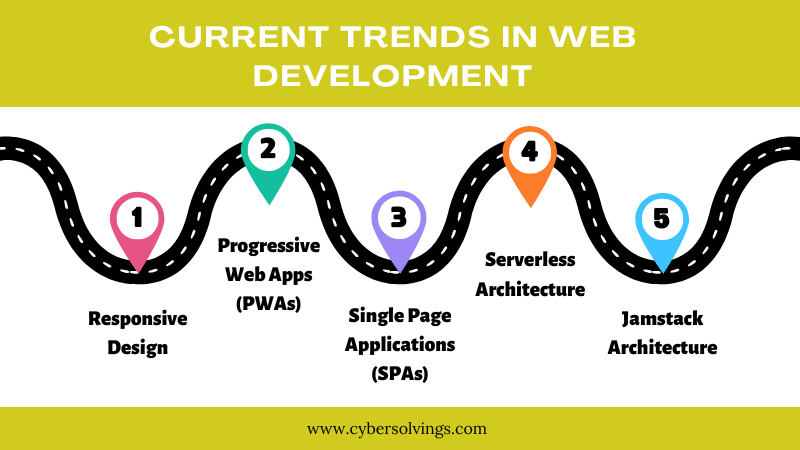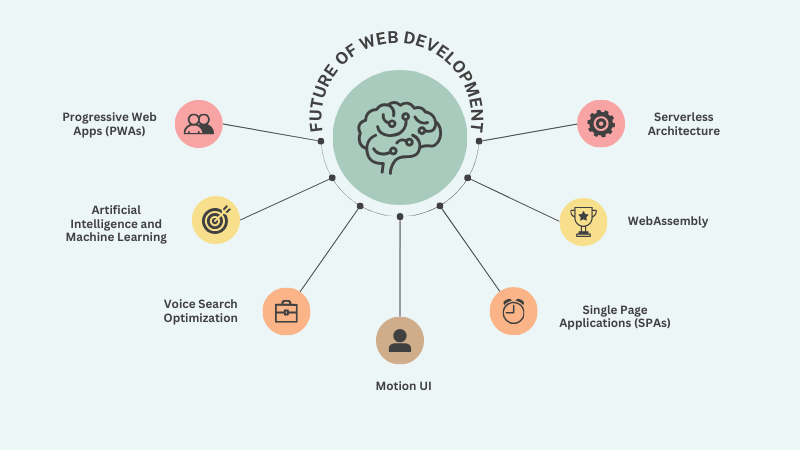 Web development has come a long way since the early days of the internet. As we navigate through the digital age, the significance of web development cannot be overstated. Websites and web applications are the backbone of modern businesses, entertainment, education, and communication. This article delves into the evolution, current trends, future technologies, and the expansive scope of web development.
Web development has come a long way since the early days of the internet. As we navigate through the digital age, the significance of web development cannot be overstated. Websites and web applications are the backbone of modern businesses, entertainment, education, and communication. This article delves into the evolution, current trends, future technologies, and the expansive scope of web development.
Evolution of Web Development
Web development began with simple static HTML pages. With the introduction of CSS, developers could style their websites, making them more visually appealing. The game-changer was JavaScript, which allowed for dynamic content and interactivity. Over the years, the web development landscape has evolved with technologies like AJAX, jQuery, and modern frameworks such as React, Angular, and Vue.js.
Current Trends in Web Development
Staying updated with current trends is crucial for web developers. Some of the most significant trends today include:

-
Responsive Design: Ensuring websites look good on all devices. This approach helps improve user engagement and retention.
-
Progressive Web Apps (PWAs): Combining the best of web and mobile apps. PWAs offer offline capabilities and push notifications, enhancing user experience.
-
Single Page Applications (SPAs): Providing a seamless user experience. SPAs load a single HTML page and dynamically update content, resulting in faster load times.
-
Serverless Architecture: Reducing the complexity of deploying and managing servers. This allows developers to focus on writing code while the infrastructure is managed by cloud providers.
-
Jamstack Architecture: Utilizing JavaScript, APIs, and Markup to build fast and secure websites. This approach improves performance, scalability, and developer experience by decoupling the front-end from the back-end.
Learn More at: www.cybersolvings.com
Technologies Shaping the Future of Web Development
The future of web development is intertwined with several emerging technologies:
-
Artificial Intelligence and Machine Learning: Enhancing user experiences through personalization and predictive analytics.
-
Augmented Reality (AR) and Virtual Reality (VR): Creating immersive web experiences.
-
Internet of Things (IoT): Connecting web applications with smart devices.
-
Blockchain Technology: Revolutionizing data security and transactions.
Role of Web Developers
Web developers play various roles, including:
-
Front-end Development: Focusing on the user interface and experience.
-
Back-end Development: Managing server-side logic and databases.
-
Full-stack Development: Combining front-end and back-end skills.
-
Specialized Roles: Such as DevOps and UX/UI designers.
Skills Required for Future Web Developers
Aspiring web developers should focus on acquiring the following skills:
-
Programming Languages: HTML, CSS, JavaScript, Python, and others.
-
Frameworks and Libraries: React, Angular, Vue.js, Django, Flask.
-
Soft Skills: Problem-solving, communication, and teamwork.
Future of Web Development
Web development is continuously evolving, driven by advancements in technology, changing user behaviors, and new industry standards. Here are some key trends and predictions for the future of web development:

1. Progressive Web Apps (PWAs)
PWAs combine the best features of websites and mobile apps, offering offline functionality, push notifications, and fast load times. They provide a seamless user experience across all devices without needing separate app development.
2. Artificial Intelligence and Machine Learning
AI and machine learning will become more integrated into websites, enhancing personalization, search capabilities, and customer service through chatbots and virtual assistants.
3. Voice Search Optimization
With the rise of voice-activated devices like smart speakers, optimizing websites for voice search will be crucial. This involves using natural language processing (NLP) to improve search results and user interactions.
4. Motion UI
Motion UI makes web pages more dynamic and engaging. It involves using animations and transitions to create an interactive and visually appealing user experience, helping to guide users through the site.
5. Single Page Applications (SPAs)
SPAs provide a smoother and faster user experience by loading a single HTML page and dynamically updating content as the user interacts with the app. This reduces the need for page reloads and enhances performance.
Learn More at: www.cybersolvings.com
6. WebAssembly
WebAssembly allows developers to run high-performance applications in web browsers, enabling complex tasks like video editing, CAD applications, and 3D games directly in the browser with near-native speed.
7. Serverless Architecture
Serverless architecture enables developers to build and run applications without managing servers. It reduces costs, improves scalability, and allows for faster deployment by relying on third-party cloud services.
Scope of Web Development in Different Industries
Web development has a vast scope across various industries, enhancing digital presence and functionality.
E-commerce
-
Dynamic online stores
-
Secure transactions
-
Personalized shopping experiences
Healthcare
-
Telemedicine platforms
-
Patient portals
-
Health information systems
Education
-
E-learning platforms
-
Interactive content
-
Online assessments and certifications
Finance
-
Secure online banking
-
Investment tools
-
Financial advisory services
Media and Entertainment
-
Streaming services
-
Interactive experiences
-
Content management systems
Travel
-
Booking systems
-
Virtual tours
-
Customer reviews and recommendations
Real Estate
-
Property listing websites
-
Virtual showings
-
Real-time market data
Learn More at: www.cybersolvings.com
Impact of Web Development on Business Growth
Web development significantly influences business growth through:
-
Customer Engagement: Creating engaging websites to attract and retain customers.
-
Streamlining Operations: Automating business processes.
-
Data Analysis and Decision Making: Leveraging web analytics for strategic decisions.
Career Opportunities in Web Development
Web development offers a wide array of career opportunities, each requiring a different set of skills and expertise. Here are some prominent roles in the field:
-
Front-End Developer
-
Back-End Developer
-
Full-Stack Developer
-
Web Designer
-
UI/UX Designer
-
Web Developer
-
DevOps Engineer
-
Web Application Developer
-
Content Management System (CMS) Developer
-
E-commerce Developer
Conclusion
Web development is an ever-evolving field with vast opportunities and challenges. Aspiring developers should focus on continuous learning and staying updated with the latest trends and technologies. The future of web development looks promising, with advancements in AI, AR/VR, IoT, and blockchain paving the way for more innovative and user-friendly web experiences.


